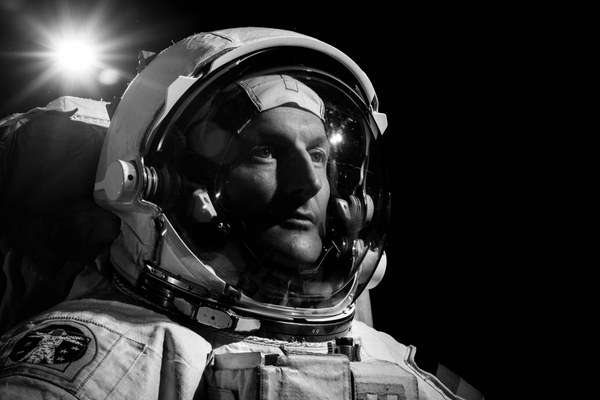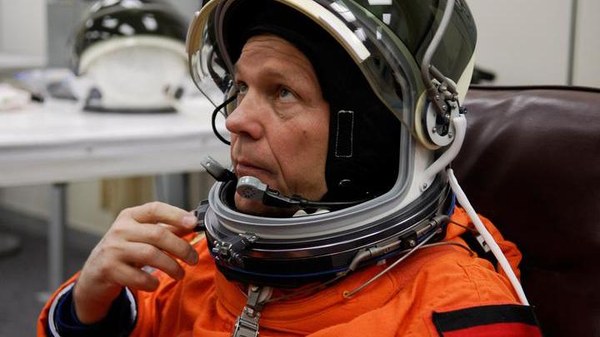German astronauts and their missions
Germans in space
In August 1978, Sigmund Jähn became the first German to go to space. Since then, 11 more German astronauts have set off on missions to test new technologies under space conditions. They have gained knowledge in basic and applied fields of research such as life and material sciences, physics, biology, medicine and Earth observation that has helped to improve life on Earth. In addition, they were involved in the expansion of the International Space Stations ISS and assembled modules such as the European space laboratory Columbus in demanding extravehicular activities.
On the ISS, the German astronauts were responsible, among other things, for docking space cargo vehicles to ensure the supply of the ISS crew. In control centres on Earth, they played an important role as payload specialists for communications between the ground station and the space station.
With their breathtaking images from the ISS observation dome "Cupola", they showed the beauty and vulnerability of our home planet in an impressive way and inspired young people for spaceflight and the associated natural sciences and technology through numerous activities and hands-on experiments. The following pages contain information on the German astronauts and their missions.
"It is only when I take off my helmet that I notice that something is different: the helmet is floating, just where I let go of it. We have reached our Earth orbit," wrote astronaut Gerhard Thiele in his on-board diary when he flew into space in February 2000 as part of the Shuttle Radar Topography Mission. Astronaut Thomas Reiter also became enthusiastic after his successful extra-vehicular activity: " When you have been working inside a space station for a long time, you are naturally happy to be able to go outside. I couldn't be any closer to space. You work on the outside of the station, travelling at 28,000 kilometres per hour, and have a view that you would never get through a window. It's an overwhelming experience, an almost indescribable feeling," he said.
To date, 12 Germans who set off into space as astronauts and cosmonauts have experienced microgravity. For some it was just one flight, while others flew several times. Thomas Reiter can look back on the longest stay in space with two long-term missions, while Ulf Merbold was in orbit the most often with three missions in 11 years. Not everyone who was accepted into the European Astronaut Corps actually went to space - Eberhard Köllner, Renate Brümmer and Heike Walpot remained on the ground as reserve astronauts. Alexander Gerst was on the International Space Station ISS twice. On 28 May 2014, he launched for what was his first mission and six-month stay aboard the ISS, and on 6 June 2018, he embarked on his second mission.
"Reaching new horizons and conquering them is what drives us humans. The ISS gives us the opportunity to leave our ‘spaceship Earth’. The Space Station is not just a one-of-a-kind laboratory, but also the first spacecraft that shows us how to live together in a multicultural community beyond our planet Earth. For me, horizons is also the perfect continuation of my Blue Dot mission, for which the focus was on our blue planet. With horizons, I am looking forward to broadening my horizons even further," said Gerst.
Matthias Maurer would be the next German astronaut to set off for the International ISS in November 2021. Maurer spent six months on the Space Station and conducted numerous experiments during his Cosmic Kiss mission.
German astronauts and their missions in reverse chronological order
Astronaut | Mission | Launch | Landing | Mission goals/achievements |
|---|
Matthias Maurer | Cosmic Kiss | 11 November 2021 | 6 May 2022 | First flight of a German astronaut to the ISS aboard a Dragon space capsule from NASA's Commercial Crew Program. |
Alexander Gerst | horizons | 6 June 2018 | 20 December 2018 | Finding solutions to the global challenges of 'Health, Environment and Climate Change' as well as 'Digitalisation, Industry 4.0, Energy and Mobility of Tomorrow' (from 3 October also the first German commander on the ISS). |
Alexander Gerst | Blue Dot | 28 May 2014 | 10 November 2014 | Gerst conducted experiments in the fields of materials physics, human physiology, radiation biology and astrophysics and was responsible for the docking of the European space freighter ATV-5. He also conducted an extravehicular activity. |
Hans Schlegel | STS-122 | 7 February 2008 | 20 February 2008 | Columbus was installed on the International Space Station ISS. |
Thomas Reiter | Astrolab (STS-121/-116) | 4 July 2006 | 22 December 2006 | This mission laid the foundations for the future use of the Columbus laboratory on the International Space Station ISS. |
Gerhard Thiele | SRTM/STS-99 | 11 February 2000 | 22 February 2000 | The mission aimed to collect data for the first three-dimensional digital map of Earth's entire surface and is known as the Shuttle Radar Topography Mission (SRTM). |
Reinhold Ewald | Mir 97 (Soyuz TM-25/-24) | 10 February 1997 | 2 March 1997 | The aim was to build on the science programme of previous Mir missions. |
Thomas Reiter | Soyuz TM-22 | 3 September 1995 | 29 February 1996 | This mission was the second ESA mission to the Mir space station as part of a series of preparatory flights for the European Columbus space laboratory. |
Ulf Merbold | Euromir 94 (Soyuz TM-20/-19) | 3 October 1994 | 4 November 1994 | The first ESA mission to the Russian space station Mir served to prepare for the era of the European Columbus space laboratory . |
Ulrich Walter/Hans Schlegel | D2 (STS-55) | 26 April 1993 | 6 May 1993 | The Space Shuttle Columbia carried the second multi-use German space laboratory (Spacelab) into orbit. On this multidisciplinary mission, the crew conducted almost 90 experiments in the fields of materials and life sciences as well as technology, automation, robotics, and Earth and space observation. |
Ulf Merbold | STS-42 | 22 Januar y1992 | 30 January 1992 | With the help of the Spacelab International Microgravity Lab (IML-1), the astronauts explored the complex effects of microgravity on living organisms and other materials. |
Klaus-Dietrich Flade | Mir 92 (Soyuz TM-14/-24) | 17 March 1992 | 25 March 1992 | On the mission, the cosmonauts conducted biological, medical and materials science experiments. |
Reinhard Furrer/Ernst Messerschmid | D1 (STS-61A) | 30 October 1985 | 6 November 1985 | In just seven days, the astronauts conducted 76 experiments. Among other things, Furrer and Messerschmidt investigated the effects of microgravity on the processing of materials and on the human body.. |
Ulf Merbold | STS-9 | 28 November 1983 | 8 December 1983 | An important part of this mission was to commission the Spacelab space laboratory built by the European Space Agency (ESA). |
Sigmund Jähn | Soyuz 31/-29 | 26 August 1978 | 3 September 1978 | Among other things, the cosmonauts conducted experiments for remote sensing of the Earth with the MKF 6 multispectral camera, as well as materials science and medical experiments. |













